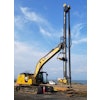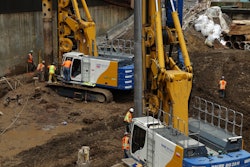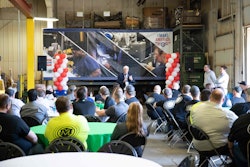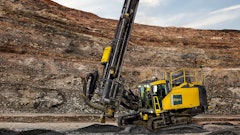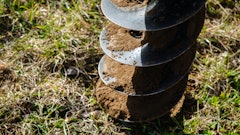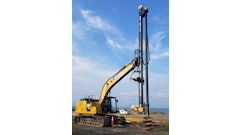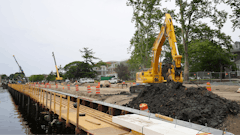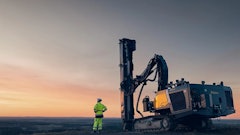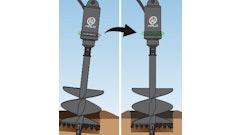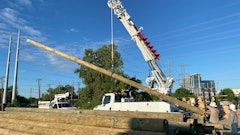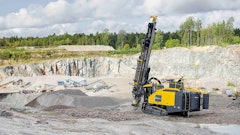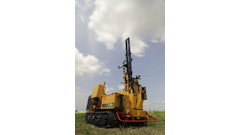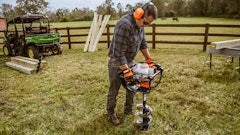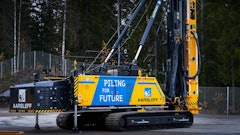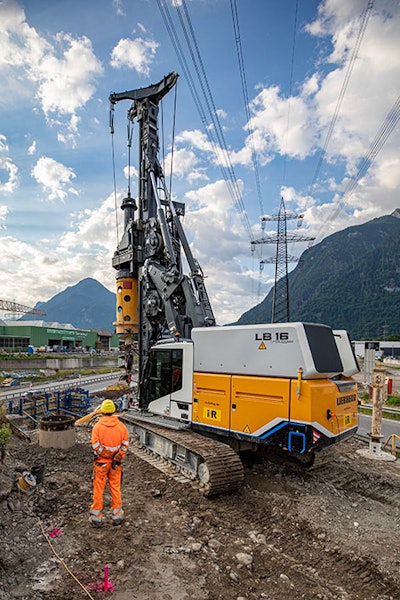
The use of machines with an electric drive means deep foundation work can for the first time be executed almost emission-free. With the LB 16 unplugged the first battery-powered drilling rig is used on one of the largest roadwork sites in western Austria.
It is a trouble spot in the western Austrian road network: the Bludenz-Bürs junction of the A14 motorway. There are frequent traffic jams and hold-ups due to congestion. In order to avoid dangerous tailbacks on the motorway, by the end of 2021 ASFINAG is to build a large roundabout with two bridges over the A14, as well as two new connections to regional roads, also with a roundabout and water protection facility.
The local company i+R is carrying out the deep foundation work on the west side. For this purpose, i+R is using the world's first drilling rig on the market with "Local Zero Emission." The LB 16 unplugged, which was recently launched by Liebherr, has an electro-hydraulic drive concept and can also be used cable-free thanks to the battery, i.e. unplugged.
Certainly aware of the responsibility for the environment and society, the alternative drive concept is well received by the customer. “Sustainability in the construction industry is not a foreign concept but common practice for ASFINAG. Innovative developments like the world's first drilling rig with zero emissions show that also on ASFINAG construction sites there is enough room for environmentally friendly construction practices,” says Andreas Fromm, managing director of ASFINAG Bau Management GmbH.
Construction site challenges
The challenges for i+R are the narrow construction site itself, as well as the restricted working height. The pile foundations must be placed directly under a power line. Therefore, the drilling rig is designed as a low head, i.e. with a shorter leader. During the project i+R is installing 148 piles and drilling 5,715 feet into the ground. Approximately 42,378 cubic feet of concrete are being poured. The piles vary between 33 and 46 feet in depth and have a diameter of 35 inches. Due to the restricted working height, casing pipes with a shorter length (7 feet) have to be used and the reinforcement cages have to be inserted in sections. The machine achieves approximately two piles per day.
Benefits of battery power
The absence of a combustion engine has two particular advantages:
- the LB 16 unplugged produces no local exhaust emissions
- generates considerably less noise
“You don't have to shout all the time. You can talk normally and your colleague hears, even when standing further away. Otherwise, when the engines are running at full power they are very loud and you always have to raise your voice, which is a burden in itself. You also don't hear little things in the surrounding area, which you do now during ongoing site work,” explains foreman Sebastian Timpe. The quieter environment is therefore also a safety-relevant aspect in regular construction site operation.
The machine has no restrictions in terms of performance and application compared with the conventional version. The battery is designed to last one working day (10 hours). It can be easily charged overnight using a standard construction site electric supply (32 A, 63 A).
Local Zero Emission
Sometimes the concrete is delivered by a Liebherr concrete mixer ETM 905 with electric drum drive. In normal operation the battery capacity is sufficient for the entire working day. As a plug-in hybrid the battery can be charged during the journey or externally via a plug, e.g. at a concrete mixing plant. i+R also uses an electric compact excavator. Thus, deep foundation work on a construction site is carried out for the first time using almost exclusively electrically driven machines.
Therefore, the best possible combination of customer benefit, environmental compatibility and efficiency is achieved. Estimated over one year, approximately9,246 gallons of diesel can be saved and more than 101 tons of carbon dioxide emissions can be avoided.
“The construction site at Bludenz-Bürs is a win-win situation for everyone: enhanced safety and fewer traffic jams for the local Vorarlberg people, and environmentally friendly use of construction machines on the currently largest ASFINAG construction site in Vorarlberg,” says Andreas Fromm.


